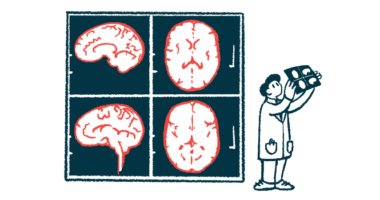Proteostasis regulators are potential Parkinson’s targets, biomarkers
Findings support increasing evidence for deregulated protein balance in the disease

Certain regulators of protein balance are suppressed in people with sporadic Parkinson’s disease and in those with familial disease linked to G2019S, the most common disease-causing LRRK2 gene variant, according to a study of patient-derived skin cells.
These findings suggest shared underlying mechanisms between both types of Parkinson’s, the researchers noted. Several of the affected regulators are also known to be altered in the brains of patients, suggesting they may participate in disease development.
“These findings support the growing evidence for deregulated proteostasis [protein balance] in PD [Parkinson’s disease] and highlight potential new therapeutic targets and biomarkers,” the researchers wrote in the study, “Regulators of proteostasis are translationally repressed in fibroblasts from patients with sporadic and LRRK2-G2019S Parkinson’s disease,” which was published in npj Parkinson’s Disease.
A mark of Parkinson’s disease is the death of dopaminergic neurons, specialized nerve cells in the brain that release dopamine, a molecule that sends messages between nerve cells. Such neuronal loss leads to abnormally low dopamine levels and the disease’s hallmark motor and nonmotor symptoms.
Previous research by researchers in Finland showed protein production is suppressed in both sporadic and G2019S-associated familial Parkinson’s.
G2019S is the most common LRRK2 gene mutation in sporadic and familial Parkinson’s. It results in higher than normal activity of LRRK2, a protein involved in protein production and the cell’s recycling and waste disposal system.
As such, alterations in protein production — and therefore proteostasis — may be a biomarker to help diagnose the disease even before motor symptoms emerge. Proteostasis encompasses several cellular processes including protein production, folding, trafficking, and degradation.
Looking at changes in protein production
It’s not known which proteins are affected and if there are differences between sporadic and G2019S-associated familial Parkinson’s patients, however, leading the same researchers to analyze changes in protein production in fibroblast cells from 13 sporadic Parkinson’s patients — five with G2019S-associated familial disease — and 14 healthy people.
Fibroblast cells, the most common cell type in connective tissue, have been used to understand molecular changes in Parkinson’s and can be readily sampled via skin punch biopsy.
Overall protein production was significantly reduced in sporadic and familial Parkinson’s patients compared with the healthy controls, initial experiments confirmed. Looking more closely, the production of 33 proteins in sporadic patients and 30 proteins in familial patients was selectively reduced.
Consistently, all the proteins that were significantly altered in the LRRK2-G2019S patient samples, compared with healthy controls, were significantly reduced across the proteome — the complete set of proteins made in a cell. These reductions relative to controls were less pronounced in sporadic patient samples than among the familial group.
Notably, 77% of proteins with reduced production in sporadic patients were also suppressed in the familial group, while 53% of suppressed proteins in LRRK2-G2019S patients overlapped with the sporadic group.
These findings suggest “the underlying mechanism is at least partly shared in both types of PD [Parkinson’s disease],” the researchers wrote.
The effect on protein balance
Many of the suppressed proteins are involved in proteostasis processes, including molecular sorting associated with endolysosomes, processing of messenger RNA (mRNA), and the translation mechanism. Endolysosomes are vesicles involved in breaking down and recycling molecules coming from outside of cells. mRNA is the molecule derived from DNA that acts as a template for protein production, and translation is the process of transforming the information in mRNA into proteins.
The data identified proteins affected in Parkinson’s and “which are not recovered by [balance-promoting] mechanisms, but remain low at the total proteome level and are therefore most likely to contribute to the underlying [disease-associated mechanisms],” the researchers wrote.
The reduced levels of these proteostasis regulators were not due to lower activity of the gene that encodes them, indicating a repression at the translation level, analysis revealed.
Treating sporadic patient cells with a molecule that blocks the LRRK2 protein rescued the altered production of all five proteins measured — ATG9A and EHD1 (endolysosomal sorting), YTHDF3 (translation machinery), and AP2B1, known to interact with LRRK2.
Several of the repressed proteostasis regulators have been previously shown to be reduced in the brains of Parkinson’s patients, suggesting they may be involved in disease development, making them “potentially interesting clinical targets and biomarkers for PD drug trials and treatment monitoring,” the researchers wrote, noting their identification of proteins that are repressed “at the level of translation in PD patient fibroblasts” could inform the disease’s mechanism or function as markers for treatments based on LRRK2 inhibition.







